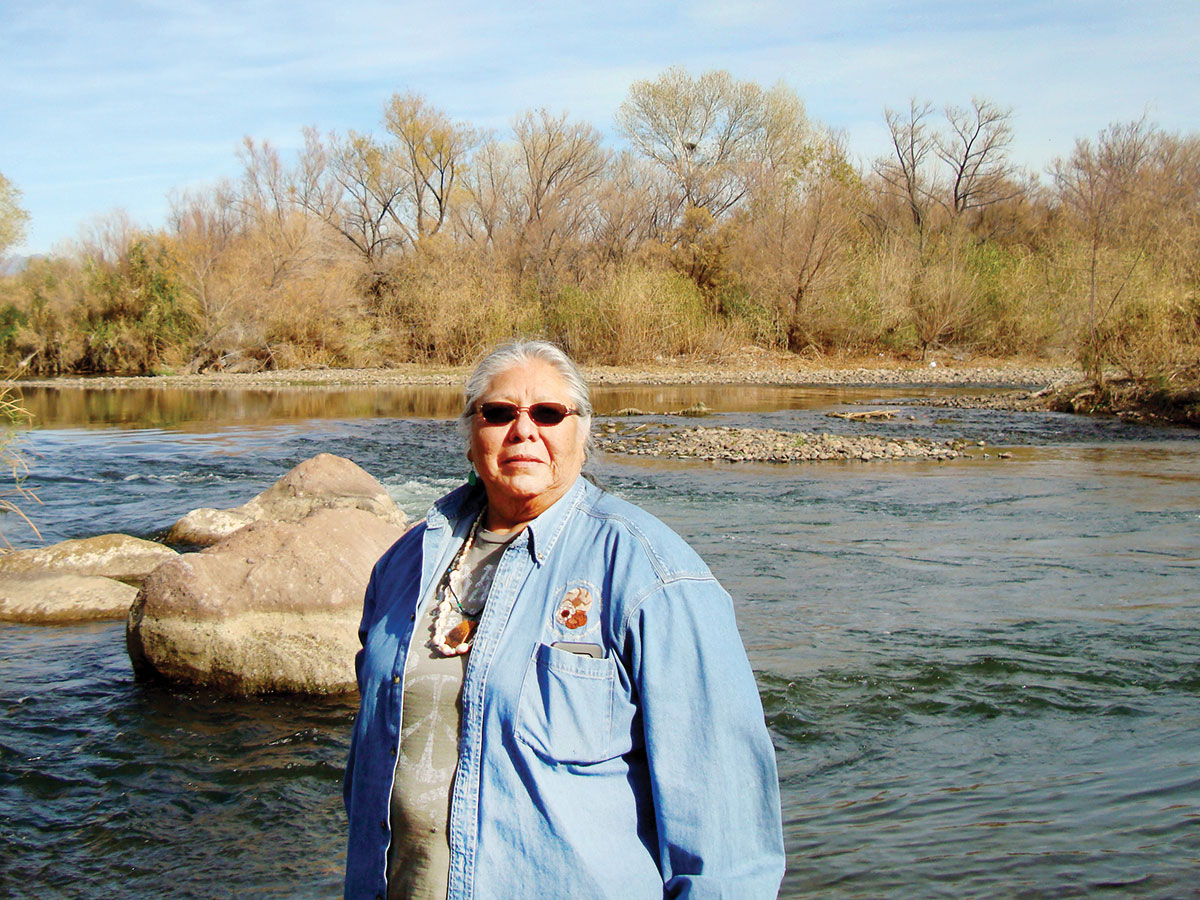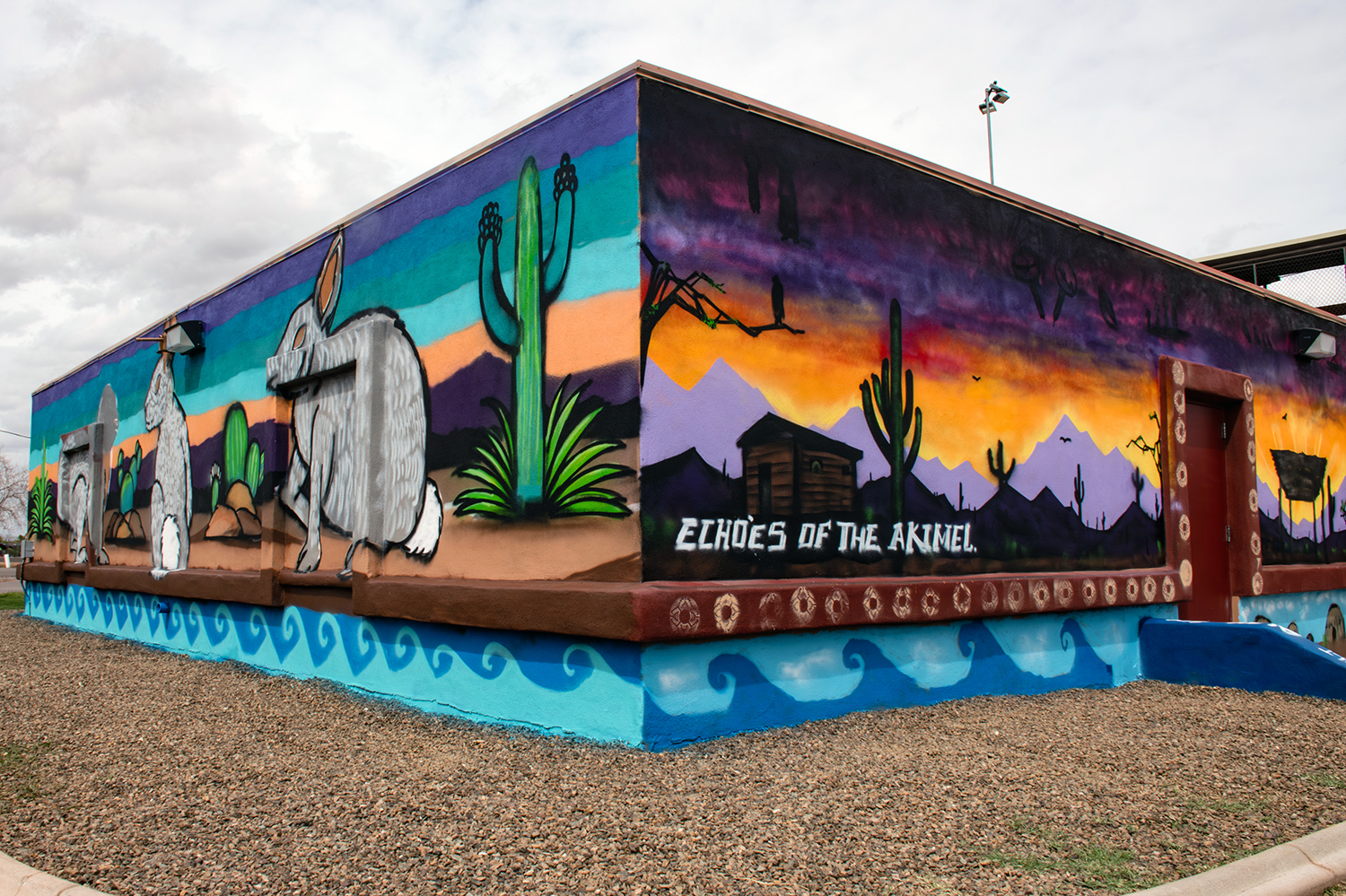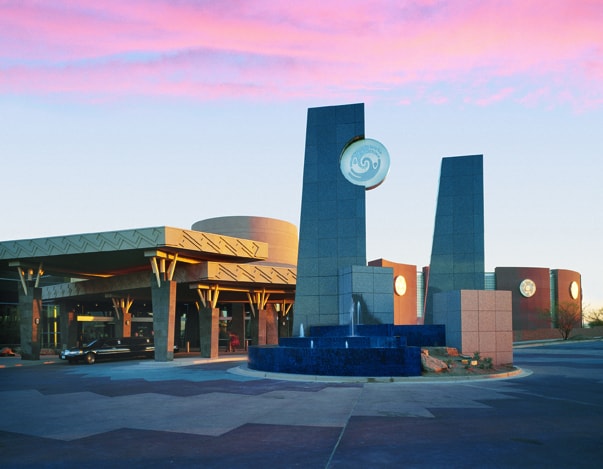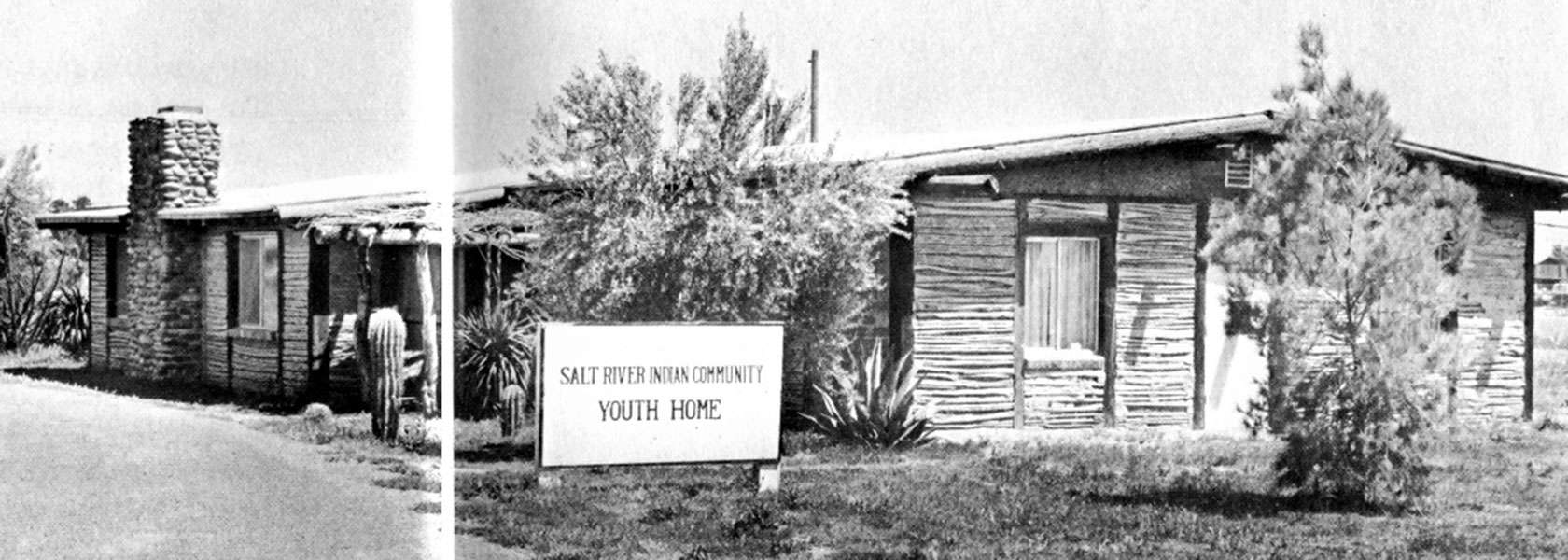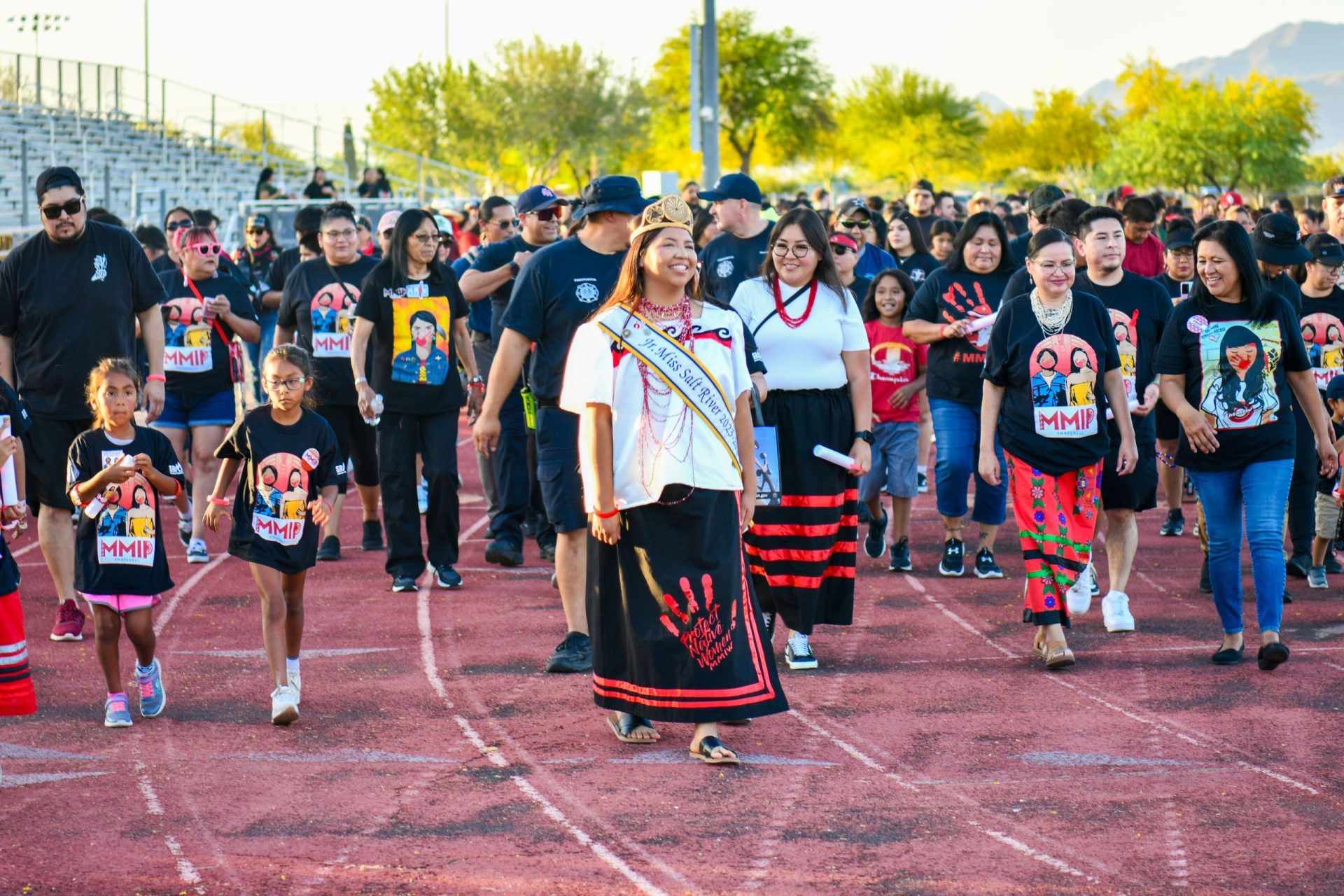VIEWS: 2627
March 16, 2022Cultural Resource Department Educational Specialist Honored for 40 Years of Service with the Community
Salt River Pima-Maricopa Indian Community member and 40-plus-year SRPMIC employee Diane Cashoya recently reviewed her time working with the Community.
She recalled working as a youth worker at various locations within the Community each summer. Her first summer job was at the Salt River Day School, where she helped prepare school materials for the following school year. After that she worked at the Bureau of Indian Affairs (BIA) Housing and Recreation during the summers.
After she graduated from high school, Cashoya went to live with her uncle and his family in California.
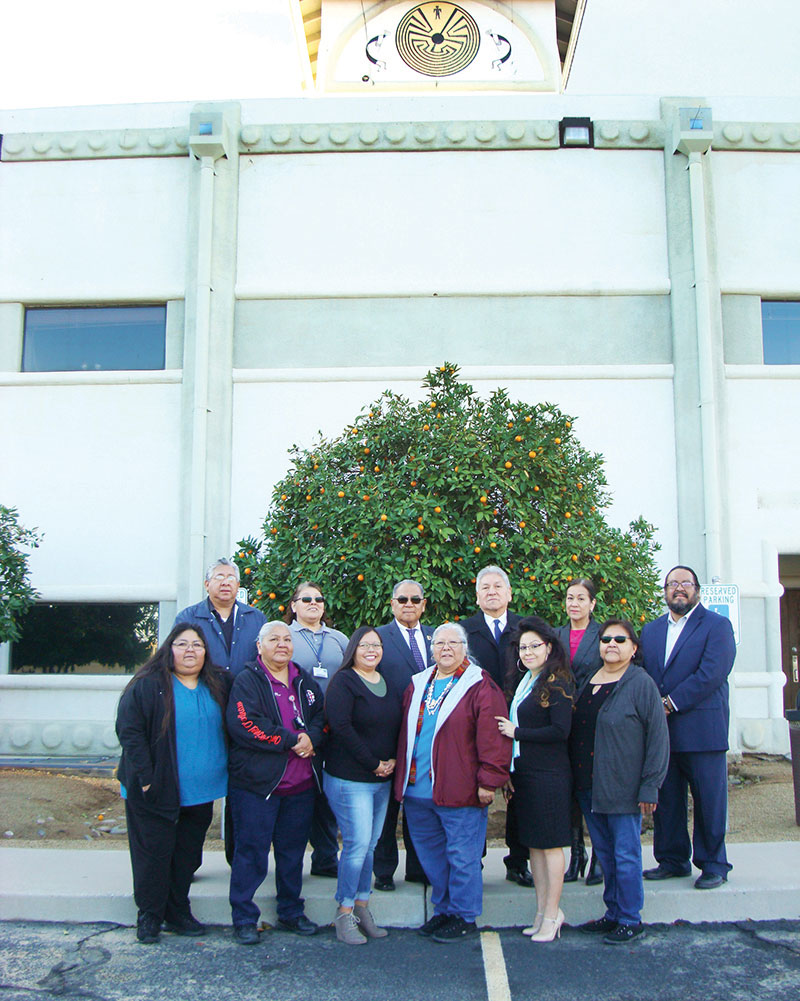
“I stayed out of school for a couple of years; my uncle and his wife worked at Sherman Indian High School in Riverside, California,” said Cashoya. “I helped by babysitting my cousin, who was a toddler at that time. I was there for about two years.”
This was around the time Scottsdale Community College was under construction. When it opened in 1970, Cashoya decided to come back to the Community and pursue her college education. From 1971 to 1973 she took classes each fall and spring semester. During the summers she would go to the Human Resources Department to find temporary work; each year she was successful in getting into programs with the help of former Human Resources employee Robin Enos.
“I would go to Robin to help me get some work during the summers when I wasn’t at school. She ended up putting me under some program and I went to work at the BIA’s Property and Supplies with the late Clarence Chiago,” said Cashoya. “I did a lot of ordering for the BIA: ordering all their supplies, doing purchase orders, answering their calls. It was interesting and kept me busy, and when the fall rolled around, I would go back to SCC and take my general studies.”
One summer the Community didn’t have any work for her, so she worked at SCC. Then the following summer she went back to work with BIA’s Property and Supplies. When that summer ended, she decided not to go back to school and instead applied to work at the Salt River Day School once again.
“Mr. Chiago told me they were hiring for a clerk/typist at the Day School and encouraged me to apply, so I did and got the job,” said Cashoya. “I worked in the front office making the cafeteria menu and schedules and ordering school supplies. It was a Title I-type BIA program, so in the summer I would have to reapply. I did that for two years, then I resigned and didn’t do anything for a year.”
In the late 1970s, Cashoya decided to go back to college in California. Then she found out she was going to have a baby. Her mother felt it would be best if she came back home, so she returned to the Community and had her son. When Cashoya was growing up, her mother received assistance from the state, something she didn’t want to do when she started her own family.
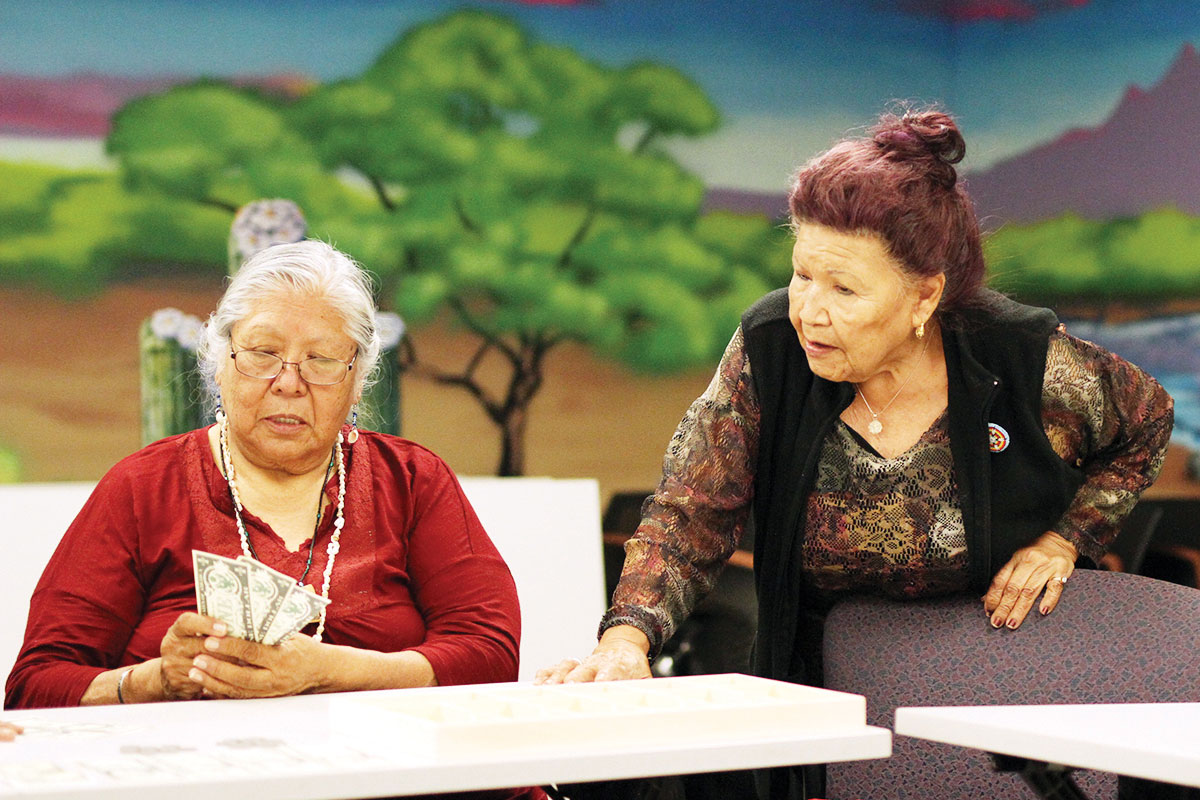
“I always told myself I didn’t want to apply for assistance,” said Cashoya. But her son was coming up on six months old and she hadn’t found work. “I wasn’t having any luck, and the day I decided to go and file for assistance, Human Resources was trying to get hold of me to come and apply for a new work program. The program was funded by the state, and I could work at the Police Department, Finance or the Court. I ended up going to the Court, working as a filing clerk, and it just so happened that in my last semester at SCC I had taken a filing class. That came in handy when I applied for this job.”
The temporary job helped Cashoya keep busy. She reorganized the Court files after the Court moved to a new building. She worked in that program for a couple of years, and when the late Relman Manuel became the chief judge, he felt the need to hire a permanent, full-time court clerk.
“There were a couple of other temporary court clerks, and I was fortunate to be promoted to the permanent position. Esther Moyah choose me to continue to work under her,” said Cashoya. “I later became the assistant court administrator until I left the Court in 2012.”
Cashoya loved working at the Court. She said she learned a lot there, learning how to help and listen to people in their time of crisis. Although she couldn’t do much but tell them to fill out a petition, she was able to give them a listening ear. She saw many changes and the growth of the Court, recalling a time when there were only a few employees there, no more than 10.
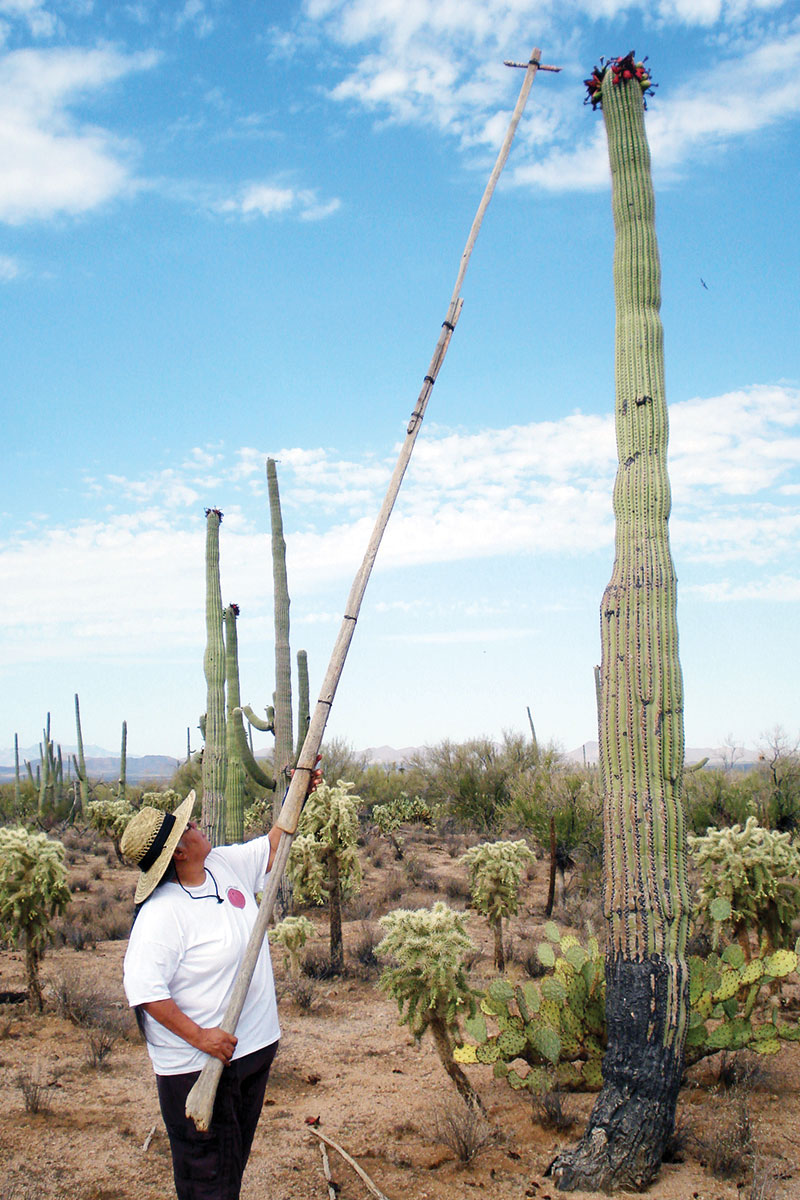
“We had to write out the complaints for restraining orders and traffic tickets because we didn’t have any defense or prosecutors at that time,” said Cashoya. “I remember talking to the late Martin Harris, asking him how did we manage to do all that and also file, answer phones and listen to the people who came in for services.”
Later, after the Duro v. Reina case went to the United States Supreme Court, Manuel felt the Community should get prosecutors and defense advocates. Cashoya explained that there were advocates, but people would have to pay for them out of their own pockets if they wanted representation. So she saw the court grow in both staff and services over the 32 years she worked there.
Cashoya remembered a few occasions when she was called upon to translate for people who only spoke O’odham. Growing up she had learned how to speak the language, but as time went by she started to lose the vocabulary.
“I remember talking to someone who called into the Court and I was translating. They were talking and I could understand them, but I would answer them in English. They asked me if I knew how to speak O’odham, and I realized I was losing how to speak it,” said Cashoya. “This gave me the thought that when I retire from the Court, I would want to go work at the O’odham Piipaash Language Program or the Senior Center, where I can speak the language.”
When it came time for Cashoya to move on from the Court, she had no time in between to rest. She worked through the last weekend she was with the Court, cleaning out her office, and was there until 7 a.m. Monday morning. She had to run home, shower and meet her new boss at the Human Resources Department for orientation. Luckily, she lived close by.
“I am thankful I made the switch and I am able to contribute to preserving the O’odham language,” said Cashoya. “I was hesitant at first, because I didn’t think I was a teacher, but now I am able to teach a language class.”
Her goal when she first started was to be able to get to the point where she could teach a class without using any English. She is getting close to that goal. She explained that in one of her last O’odham language classes in the fall she spoke in O’odham pretty much the entire time. Cashoya continues to learn every day in her job; for example, in the past two years she’s learned new communication tools such as Zoom so she can hold virtual classes.
“I am glad to make the contributions to the Community anywhere I can, because we always help whoever we can,” said Cashoya. “I hope to continue working as long as I can, if my health allows me.”
She closed her interview by acknowledging those who helped her along the way, including Esther Moyah, Robin Enos, Mary (Malia) Garcia, Alice Manuel, the late Alberta Mercado, the late Relman Manuel and her entire family.

